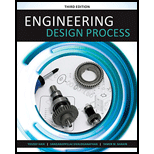
The following ethical scenario was obtained from http://www.cwru.edu/wwwethics.
You are an engineer charged with performing safety testing and obtaining appropriate regulatory agency or outside testing laboratory approvals of your company’s product. The Gee Whiz Mark2 (GWM2) has been tested and found compliant with both voluntary and mandatory safety standards in North America and Europe. Because of a purchase-order error and subsequent oversights in manufacture. 25,000 units of GWM2 were built that are not compliant with any of the North American or European safety standards. A user would be more vulnerable to electric shock from one of these units than from a compliant unit. Under some plausible combinations of events, the user of the bad unit could be electrocuted. Retrofitting these products to make them compliant is not feasible because the rework costs would exceed the profit margin by far. The company agrees that because of this defect the agency safety labels will not be attached to the bad units, as per the requirements of the several agencies. Only two options exist: (a) Scrap the units and take the loss, or (b) sell the units. An employee of the company notes that many countries have no safety standards of any kind for this type of product. It is suggested that the bad units be marketed in these countries. It is pointed out that many of these nations have no electrical wiring code; or if codes exist, they are not enforced. The argument is thus advanced that the bad GWM2 units are no worse than the modus operandi of the electrical practice of these countries and their cultural values. Assume that no treaties or export regulations would be violated.
- a. What would be your recommendation?
- b. Suppose one of the countries under consideration was the country of origin for you or your recent ancestors. Would this affect your recommendations?
- c. Now suppose you are not asked for a recommendation, only an opinion. What is your response?
- d. Suppose it is suggested that the bad units be sold to a third party, who would very likely sell the units to these countries. Your comments?
- e. You are offered gratis one of the bad units for your use at home, provided that you sign a release indicating your awareness of the condition of the unit and that it is given to you as a test unit. Assume you cannot retrofit it and that the product could be very useful to you. Would you accept the offer?
- f. Suppose it is suggested that the offer stated in part (e) be made to all employees of the company. Your comments?
Trending nowThis is a popular solution!

Chapter 3 Solutions
ENGINEERING DESIGN PROCESS
- (read image) (answer given)arrow_forward11-5. Compute all the dimensional changes for the steel bar when subjected to the loads shown. The proportional limit of the steel is 230 MPa. 265 kN 100 mm 600 kN 25 mm thickness X Z 600 kN 450 mm E=207×103 MPa; μ= 0.25 265 kNarrow_forwardT₁ F Rd = 0.2 m md = 2 kg T₂ Tz1 Rc = 0.4 m mc = 5 kg m = 3 kgarrow_forward
- 2. Find a basis of solutions by the Frobenius method. Try to identify the series as expansions of known functions. (x + 2)²y" + (x + 2)y' - y = 0 ; Hint: Let: z = x+2arrow_forward1. Find a power series solution in powers of x. y" - y' + x²y = 0arrow_forward3. Find a basis of solutions by the Frobenius method. Try to identify the series as expansions of known functions. 8x2y" +10xy' + (x 1)y = 0 -arrow_forward
- Hello I was going over the solution for this probem and I'm a bit confused on the last part. Can you please explain to me 1^4 was used for the Co of the tubular cross section? Thank you!arrow_forwardBlood (HD = 0.45 in large diameter tubes) is forced through hollow fiber tubes that are 20 µm in diameter.Equating the volumetric flowrate expressions from (1) assuming marginal zone theory and (2) using an apparentviscosity for the blood, estimate the marginal zone thickness at this diameter. The viscosity of plasma is 1.2 cParrow_forwardQ2: Find the shear load on bolt A for the connection shown in Figure 2. Dimensions are in mm Fig. 2 24 0-0 0-0 A 180kN (10 Markarrow_forward
- determine the direction and magnitude of angular velocity ω3 of link CD in the four-bar linkage using the relative velocity graphical methodarrow_forwardFour-bar linkage mechanism, AB=40mm, BC=60mm, CD=70mm, AD=80mm, =60°, w1=10rad/s. Determine the direction and magnitude of w3 using relative motion graphical method. A B 2 3 77777 477777arrow_forwardFour-bar linkage mechanism, AB=40mm, BC=60mm, CD=70mm, AD=80mm, =60°, w1=10rad/s. Determine the direction and magnitude of w3 using relative motion graphical method. A B 2 3 77777 477777arrow_forward
 Elements Of ElectromagneticsMechanical EngineeringISBN:9780190698614Author:Sadiku, Matthew N. O.Publisher:Oxford University Press
Elements Of ElectromagneticsMechanical EngineeringISBN:9780190698614Author:Sadiku, Matthew N. O.Publisher:Oxford University Press Mechanics of Materials (10th Edition)Mechanical EngineeringISBN:9780134319650Author:Russell C. HibbelerPublisher:PEARSON
Mechanics of Materials (10th Edition)Mechanical EngineeringISBN:9780134319650Author:Russell C. HibbelerPublisher:PEARSON Thermodynamics: An Engineering ApproachMechanical EngineeringISBN:9781259822674Author:Yunus A. Cengel Dr., Michael A. BolesPublisher:McGraw-Hill Education
Thermodynamics: An Engineering ApproachMechanical EngineeringISBN:9781259822674Author:Yunus A. Cengel Dr., Michael A. BolesPublisher:McGraw-Hill Education Control Systems EngineeringMechanical EngineeringISBN:9781118170519Author:Norman S. NisePublisher:WILEY
Control Systems EngineeringMechanical EngineeringISBN:9781118170519Author:Norman S. NisePublisher:WILEY Mechanics of Materials (MindTap Course List)Mechanical EngineeringISBN:9781337093347Author:Barry J. Goodno, James M. GerePublisher:Cengage Learning
Mechanics of Materials (MindTap Course List)Mechanical EngineeringISBN:9781337093347Author:Barry J. Goodno, James M. GerePublisher:Cengage Learning Engineering Mechanics: StaticsMechanical EngineeringISBN:9781118807330Author:James L. Meriam, L. G. Kraige, J. N. BoltonPublisher:WILEY
Engineering Mechanics: StaticsMechanical EngineeringISBN:9781118807330Author:James L. Meriam, L. G. Kraige, J. N. BoltonPublisher:WILEY





